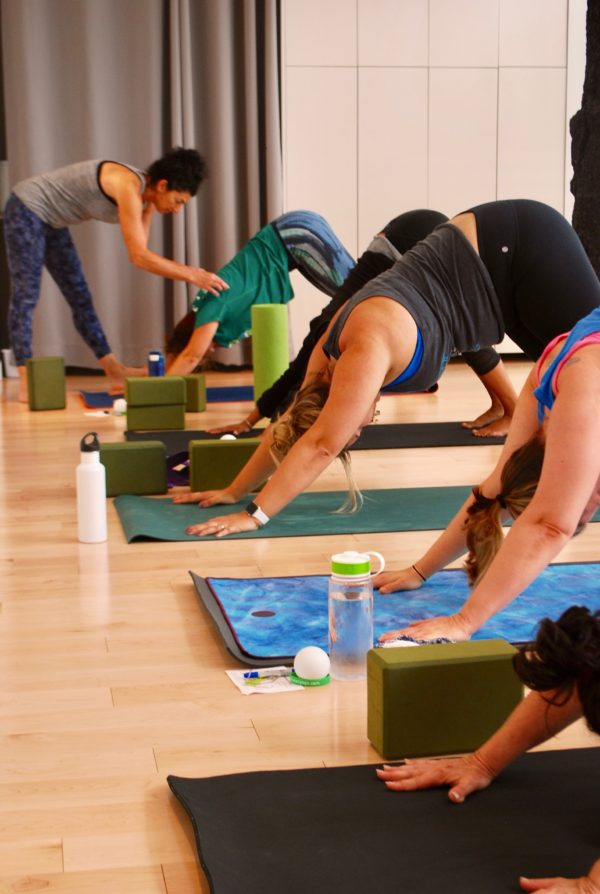
Many times when I meet people and they find out what I do, they say, “Wow, you must be in such great shape from doing all that yoga.” When I tell them that I don’t DO yoga when I teach, they sometimes shake their head in disbelief. “What do you mean? How then do the students know what to do?”
This can be a common assumption; that in order to teach yoga, we must be demonstrating a lot or in fact doing the whole sequence with class. I know for a number of newer teachers, one of the first things they do when they go into the studio to teach is roll out their mat in the front. Well, I do that too, but I’m doing very little yoga when I teach. Frankly, my mat is just a placeholder in front so I have a good view of everyone in the room.
What’s the problem with practicing while you teach? I’ll bet many of you went to trainings with a senior teacher and that person was practicing with the group the whole time. I think that’s a bit different. I recall myself at most of my original teacher trainings, once we all had been there a few days, we had a joint practice that included the teacher practicing with us. But make no mistake, he knew exactly what was going on.
For most of our regular day-to-day classes, using cues rather than practice can be quite effective. Cueing students while walking around or at least standing front and center gives you a chance to see if your cues are working! As soon as you lose sight of the students, either because you’re practicing or assisting someone intently, you can’t see if what you’re saying is having the desired effect. This is YOUR best teacher as a TEACHER as to whether or not WHAT you say creates RIGHT ACTION in the students. This comes from experience, trying new things and building your knowledge base but absolutely depends on you watching the class.
Now, what about those who say that some students learn better visually than through auditory cues? I get that and yes, that is definitely true. For those students, the first thing is you’ll know they’re confused because you’re not practicing and you’re watching them. When you give the cue the first time, you’ll see the confusion and that’s a great time to take a moment to demonstrate. Also, if you are heading into a pose in the sequence that you know has a lot of moving parts or something a bit more complex, of course, just do the pose in the front of the room first, provide the cues, then get back to walking around. The idea of this approach is that you’re not practicing the whole time, you’re just peppering the class with some practice but it’s all in the context of demonstrating versus practicing.
If you’re looking for ways to build more effective cues, it’s essential you be able to recognize the different kinds of cues you can give and have an idea of when to use which kind of cue and how to stay really present and less distracted. My free webinar on “Effective Cues” will help you learn. To watch it, just click here.Â
Looking to learn more anatomy to help you provide anatomically based cues to your students? Let me help you build a customized learning plan to learn anatomy. I’d love to hear more about what you’d like to learn and I’ll build you a plan to helps you build your knowledge and confidence! To set up a time for your free consult, click here.Â
What do YOU think about this topic? Do you practice with class? Why or why not? Comment below.
Thanks for reading!
